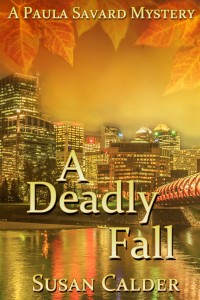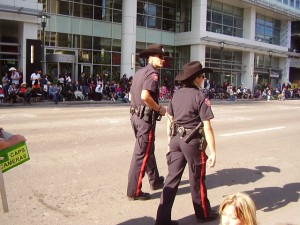On Friday, the Calgary central library launched the Print(ed) Word documentary to a celebratory audience. In the film, the twelve artist/writer partners talked about their experiences with this collaborative project. I’m proud to be part of it. My partner, Sylvia Arthur, did a great job of turning my short story, When a Warm Wind Blows Off the Mountains, into an art book. All twelve books are on permanent display in the central library, housed in an alcove off the 4th floor Great Reading Room. For a taste of the works, have a look at the documentary movie trailer.
All posts by admin
Five Changes in My Writing Life Since 2010
Here’s my blog post, which appeared on my publisher BWL’s website on Jan 12th.
I enjoy year end lists. Even better are lists at the end of a decade. Here’s my list of five changes to my writing life that happened in the ten years from January 2010 to January 2020.
1. I became a published author. Prior to 2010, I’d published short stories, poems and articles. They all helped me feel like a real writer and led me to teaching writing courses and workshops, but the term ‘published author’ is generally reserved for those who have published a book. This was a milestone I longed to achieve. After years of work, my first novel, was published in spring 2011.
2. I stepped up my social media presence. I was on Facebook before Deadly Fall was published, but only had a small number of Facebook friends, all people I knew in my real life. After my book publication, I started accepting requests from virtual strangers and posted (too many) notices about my literary activities and accomplishments in the interests of promoting the novel. I also joined Twitter and had my son’s friend create my author website, which automatically tweets my website posts. In addition, I’ve dabbled in Link-In, Goodreads, Pinterest and Instagram. It seems that just when I get onto one social media site something else becomes the hot new thing.
 |
| Social Media can make me feel pulled in all directions |
3. My office moved to a different room in my house. Okay, I’m cheating here because my home office changed when my husband retired in fall 2007. But it took a few years for us to settle into our new routine. When he was working, as soon as he left for the office I’d go to my den upstairs to write. My retirement gift to him was our den, a sunny spot that looks out to a green space. I moved my work to our north-facing guest room with a street view. I figured that if he had an appealing room for his various computer activities, he wouldn’t distract me from my writing, while I don’t need the view while I’m forming stories in my head. The plan worked. After breakfast these days, he goes to his den and I huddle in the corner of our guest room. But lately, I’ve felt an urge for a brighter, more scenic and spacious room of my own for writing.
| Jane Austen wrote pretty good novels at this small writing table with its view of the clock in the family sitting room. |
4. I became a regular at a writing festival. Calgary’s When Words Collide Festival For Readers and Writers launched in August, 2011. I went the first year, since it’s held in my home city, and haven’t missed a year since then. This coming August will be the festival’s 10th anniversary. I’m bound to find whatever I’m looking for as a writer there, whether it’s information about the craft or getting published or promoting my books. Toss in a little fun for a winning combination.
| Dressed for the festival’s banquet, Roaring Twenties theme |
.
5 At When Words Collide, I found my publisher. BWL published my second and third novels and there’s a fourth one in progress. In November, BWL released a new edition of my first book, retitled A Deadly Fall. The re-publication brings the 2010s full circle and seems a fitting end to the decade.
My End of Decade List

For January on the BWL Author Blog. I talk about five changes in my writing life during the past decade, from January 2010 to January 2020.
Happy New Year
New year’s is a time of wrap-ups for the year we’re leaving. It’s also the season for the best-of-the-year competitions. My publisher suggested we enter our 2019 novels in the 22nd Annual Critters’ Readers Poll. As winners of the People’s Choice TV awards always say, it means the most to be chosen by the people rather than the critics or those with a vested interest in who wins.

I entered To Catch a Fox in the Critters’ Novels (All other genres) published in 2019 category. Voting is easy. Click the circle for your favourite book, then fill in the next few boxes and submit. I’d love it you want to help my book find new readers.
My very best to you for a happy and healthy 2020, sprinkled with new adventures.
Happy Holidays with Jane Austen
For those who missed it on my publisher BWL’s website, here’s my December blog post, A Jane Austen Christmas.
On a recent trip to Ottawa, Ontario, I went to a play. Miss Bennet: Christmas at Pemberley, a new work produced by Ottawa Little Theatre. Fans of Jane Austen’s classic novel, Pride and Prejudice, will instantly recognize the cues in the play’s title. Pride and Prejudice is the story of the five Bennet sisters, living in early 19th century England, in search of husbands for fulfillment and financial survival. The novel’s hero, Mr. Darcy, owned Pemberley, a great estate.
 |
| ‘Pemberley’ in one of the numerous Pride and Prejudice screen adaptations |
Christmas at Pemberley takes place two years after Pride and Prejudice. The play opens with Elizabeth Darcy nee Bennet admiring her newfangled holiday decoration, a Christmas tree. Mr. Darcy is appalled by the outdoor tree in his living room. Elizabeth’s challenge to his conventionality is true to her character developed in Pride and Prejudice, but I find this domestic conflict lacks the zing their verbal sparring in the novel. The problem with all Austen novel sequels is that once the lovers resolve their all their problems they become boring. That’s why Jane Austen ended their stories at this point. But fans like me keep wanting more of the Bennets and Darcys.
 |
| The Christmas tree tradition came to Britain with King George III’s German-born wife, Charlotte of Mecklenberg-Strelitz |
The heroine of Christmas at Pemberley is the overlooked middle Bennet sister, Mary. In the novel, Austen portrays Mary as drearily bookish, Mary seeks attention by forcing her mediocre piano playing on hapless attendees at neighbourhood parties. The authors of the new play rightly realized that Mary’s love of reading and music has a positive side. She wants more from life than her sisters. When the family gathers at Pemberley this Christmas, Mary meets her soul mate, Darcy’s equally bookish cousin. It doesn’t hurt that the cousin is handsome and rich.
But romantic complications and misunderstandings ensue. Most of them are initiated by Lydia, the selfish youngest Bennet sister who’d foolishly eloped with the scoundrel Wickham. Their hasty marriage has fallen apart and Lydia wants the rich cousin for herself.
I won’t give away the rest of the plot, except to say that when Jane, the perpetually sunny oldest Bennet sister sympathizes with Lydia and treats her with kindness, Lydia changes. For me, this was the most surprising character development in the play. Who knew Lydia had it in her?
 |
| The five Bennet sisters |
In the play, I also liked the guy friendship between Darcy and Jane’s sunny husband, Bingley. After the men discuss the problems between Mary and the cousin, they agree they must do something to help. Darcy and Bingley jump to their feet and say, “Let’s go to the sisters,” instantly recognizing that relationship repair isn’t guy territory.
 |
| Colin Firth, my favourite screen Darcy, with Bingley |
Calgary Playwright Eugene Stickland has said that writing a Christmas play is a practical move for writers because theatre companies across the country look for ones to produce every year. A good play for the season results in repeated royalties for the author.
This has got me thinking about Kitty, Bennet sister # 4 and the most overlooked sister of all. Austen portrays her in the novel as no more than Lydia’s sidekick, lacking the pizazz of her younger sister. Kitty is absent the play’s Christmas shenanigans, merely referred to as spending the holidays in London. This makes Kitty almost a blank slate for a modern writer. If Lydia can change, why not Kitty?
My Austen-inspired play would focus on Kitty emerging from the shadows of her colourful sisters and growing into her own person. Set at Christmastime, somewhere in Austen-land. Kitty will need a suitor who’s right for her, perhaps a man who has also been overlooked. Plenty of complications and misunderstandings along the way will lead them to true romance. A winning Jane Austen Christmas.
A Jane Austen Christmas
I don’t always write a Christmas-theme post for my December 12th blog on the BWL website, but here it is today.
Happy Holidays to everyone!
![800px-Christmas_Tree_1848[1]](http://susancalder.com/wp-content/uploads/2019/12/800px-Christmas_Tree_18481-235x300.jpg)
Updating my novel for its new release was more work than I’d thought – but worth it
For those who missed my November 12th BWL BlogSpot, here’s a repeat.
The Challenges of Updating My Novel for a Second Edition
This month BWL published a new edition of my first novel, Deadly Fall. BWL chose to title the book, A Deadly Fall, in part to distinguish the new release from the original. I have long wanted to update Deadly Fall, to bring the time frame in line with the sequel, Ten Days in Summer. Deadly Fall was set in 2004. Due to the years it took me to find BWL, Ten Days in Summer wasn’t published until 2017. I asked BWL publisher Jude Pittman if I should make the sequel’s story contemporary and Paula, my protagonist, thirteen years older? Or set the sequel in 2005, making it almost historical? Jude advised me to set Ten Days in Summer in 2017, but pretend it was taking place ten months after the original Deadly Fall.
“No one will notice,” she said.
Jude was right. Nobody who has read both books has questioned me about Paula and the world’s peculiar aging. I wish I could be lucky enough to age like Paula.
For the original Deadly Fall, I was specific about the story year and referred to events of the day, such as the Iraqi hostage crisis and the jail sentencing of household guru, Martha Stewart. I even kept my local newspapers to make sure the story weather matched that of my real-life story setting, Calgary, Alberta. This was a mistake, I realized later, since Calgary enjoyed an unusual period of mild weather those September weeks in 2004. Calgary’s typical fall swings between warm and freezing, sunshine and snow, would have added interest to the story.
Since I didn’t want to radically change the second edition, I kept the mild weather from the original and found that it fit a story theme. A Deadly Fall ends with a forecast of a radical weather change, which symbolizes the changes to Paula’s life ahead as a result of the murder. I had to update the news references for the 2016 story, but tried to keep them more general. Syrian refuges arrived in Canada that summer, which they did in other years.
As I worked through my revision of 2004 Deadly Fall, I realized how much the world changed in those twelve years. Paula, like me, was a little old-fashioned regarding modern technology. But in 2016, her answering machine with a tape-recorded message had to go or she’d be totally out of date. She did keep her land line phone and daily newspaper delivery, although the Calgary newspaper she receives dropped its Sunday edition sometime between 2004 and 2016. This newspaper also abandoned its ‘Community’ section, but its re branded ‘You’ section works for Felix, a secondary character who writes a weekly column.
In 2016, the television program Cheers didn’t appear in afternoon reruns. I changed this to Modern Family. The Canadian penny disappeared from monetary circulation. Paula no longer has a flip-open cell phone. She watches Blu-rays and Isabelle, a secondary character, works in a music store, not a video store.
I had to change numerous cultural and personal references for Paula, who is now born twelve years later than she was in the original book. Paula used to be a baby boomer, with typical attitudes of a child of the sixties. Now she’s born in 1964, past the boomer wave, with different memories of music and world events that shaped her life.
The new release also allowed me to correct small mistakes that slipped past my first publisher’s proof-reader. Missing words like ‘a’ or ‘the’ and absent punctuation marks; the word pate that should have been plate and reign vs rein.
But my most critical editing task was fixing formatting errors caused by converting the PDF file of the published Deadly Fall to a workable WORD document. The conversion resulted in some odd fonts. Acronyms like TV, DVD, ID, BC and SUV appeared in lower case. Hyphenated words at the end of a line left out the hyphen. The WORD document omitted scene breaks and italics and often broke lines mid-sentence, or didn’t start a line of dialogue on a new line.
I poured through the document with eagle eyes and had my husband do a final proof-read. After he caught my archaic penny reference, I had my character flip a quarter instead. Between us, I hope we caught everything and helped BWL produce a better book for new readers to my Paula Savard mystery series.
Should you set your novel in Canada?
For those who missed my Oct 12 post on the BWL website, here it is:
Setting a novel in Canada – or not?
Does setting a novel in Canada limit your readership to Canadians? Over the years, I’ve heard this question at Canadian writing conferences and gatherings of aspiring writers I’ve attended. Invariably, someone comments that he sent a query to an agent or publisher in the USA and was told Canadian stories don’t sell. The implication is that Canada holds little interest for readers outside our country.
Even Canadians might prefer reading about other places. I’ve been guilty of this, especially when I travel and want to learn about the country I’m visiting. A novel set in my destination gives me a flavour for the place and its history better than a guidebook.
I also recall hearing that a common feature of blockbuster novels is a variety of international settings. Author Dan Brown nailed that formula.
But others argue that Canada might be exotic to those who live far from here. They cite writers who have found great success with their stories set in Canadian locations. Louise Penny has a US publisher and an international audience for her mysteries that take place in a Quebec village. L.M. Montgomery’s classic Anne of Green Gables is beloved across the world. Japanese tourists trek to modest Prince Edward Island to visit Anne sites.
Readers of Britain’s Rough Guide travel guidebooks and tours voted Canada the second most beautiful country in the world for 2019. Wouldn’t that mean they’d want to read about people in this beautiful land? If Anne and PEI can charm the world, why not my home province of Alberta?
 |
| Japanese movie poster |
I went ahead and set my first novel, Deadly Fall, in Calgary, where I live. This made setting research easy. My mystery sleuth Paula’s drives the route pictured below in the book’s opening chapter. I’ve driven and walked across this bridge numerous times.
Paula works out in a former church converted to a gym in Calgary’s inner city suburb Kensington. In the real world it’s a sporting goods store.
Book #2 of my Paula series, Ten Days in Summer, continued with my Calgary setting. This time Paula investigates a murder against a backdrop of The Calgary Stampede. My research included attending our annual Stampede parade.
I was really sneaking peeks at the police offers present, since Paula’s homicide contact, Mike Vincelli, is on crowd control duty during the parade scene in the book.
My third novel, To Catch a Fox, is a departure from my mystery series and single Canadian setting. Julie Fox, a Calgary engineer, must travel to a new location, to search for her mother who took off when Julie was a child and hasn’t been heard from since. I settled on southern California for the novel’s alternate location because it was far enough from Calgary for Julie’s mother to get lost in, yet convenient as well as enjoyable for me to visit twice to research.
| Santa Monica beach – Julie jogs along this boardwalk |
In some ways, I find it easier to write about less familiar settings since I’m seeing the place with new eyes and am more likely to come up with fresh descriptions.
| At the San Diego zoo, bird of paradise plants are on the lookout, like Julie the pursuing and pursued fox |
While I like writing about different places, I’m back to Calgary for my current novel-in-progress, the third book in my Paula series. I love travel but lean toward writing about places I know well and deeply.
And for those curious about the other countries that made the Rough Guide readers’ list of the world’s most beautiful countries for 2019, here they are:
- Scotland
- Canada
- New Zealand
- Italy
- South Africa
- Indonesia
- England (UK regions were judged as countries)
- Iceland
- United States
- Wales (Do the British love their country’s beauty best, or have not many travelled elsewhere?)
 |
| Calgary in winter – beautiful, eh? |
Can novels set in Canada find readers?
My post today on the BWL Author BlogSpot was inspired by my recent presentation for Alberta Culture Days at the Pincher Creek library, where I spoke about my experiences of setting novels in Alberta – and elsewhere.
![14742987164_fd5b5a31fa_b[1]](http://susancalder.com/wp-content/uploads/2019/10/14742987164_fd5b5a31fa_b1-300x225.jpg)
Pincher Creek Presentation
I made the Regina Leader-Post newspaper with this story about my Alberta Culture Days presentation at the Pincher Creek Library.













